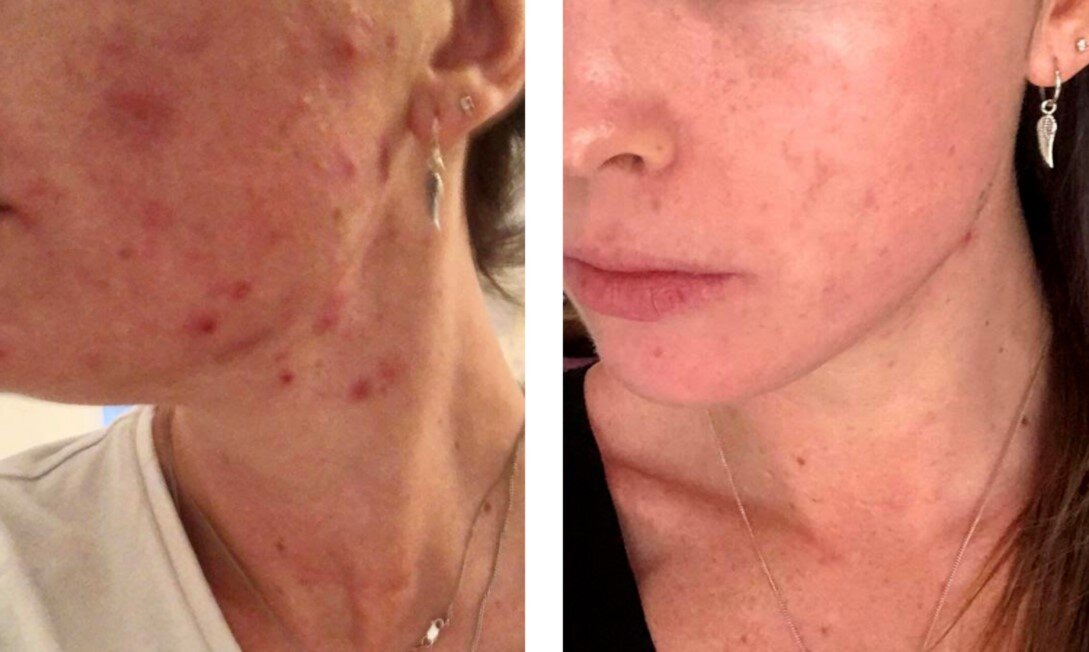Skin Blemishes
Skin blemishes cover a variety of conditions such as skin tags, wart & verrucas, moles, seborrheic keratosis, cherry angiomas (Campbell de Morgan spots) and age spots (hyperpigmentation). Here is some information on the most common blemishes - all of which we can treat in clinic.
Warts & Verrucas
A virus you've probably heard of before is actually the culprit behind all kinds of warts: human papillomavirus (HPV). Warts can occur anywhere on the body but occur most commonly on the hands and feet. Warts on the feet are called verrucas (or verrucae). Sometimes verrucas are painful if they press on a sensitive part of the foot.
Typically, warts are caused by direct contact with HPV-infected skin. When the virus infects the basal layer of the epidermis and starts to divide, warts are the result. Warts are usually harmless but may be unsightly.
HPV is able to infect the skin when it's broken, so if you have cracks in your skin from dryness or a cut from an injury, that's an opening for HPV. What type of wart you develop depends largely on the strain of HPV you're exposed to; there are more than 100 different strains that we know of.
People with weakened immune systems are also more at risk of developing warts, including children and the elderly, and those who are immunocompromised through either medicine or illness.
Download our Scars and Skin Texture Skincare Guide Today!
Skintags
Collagen is a type of protein found throughout the body, and skin tags are made of loose collagen fibres and blood vessels surrounded by skin and usually appear as if they are on a stalk. Skin tags tend to grow in the skin folds, where the skin rubs against itself, such as on the neck, armpits or groin.
They often go unnoticed, unless they are in a prominent place or are repeatedly rubbed or scratched, for example, by clothing, jewellery, or when shaving.
Both men and women can develop skin tags. They tend to occur in older people and people who are obese or have type 2 diabetes. Pregnant women may also be more likely to develop skin tags as a result of changes in their hormone levels. However, some people develop them for no apparent reason.
Age Spots
Age spots (also called liver spots and solar lentigines/freckles) are small dark areas on your skin. They vary in size and usually appear on the face, hands, shoulders and arms — areas most exposed to the sun. They are very common. They occur from years of exposure to sunlight, often as a result of sunbathing or use of sunbeds. Constant exposure to ultraviolet (UV) rays changes the colour of skin, turning it to a light or dark brown colour.
This is fine when you are young but as you get older your skin is less effective at regeneration as a result of sun exposure which leads to the formation of age spots. Plus your skin is thinner and more fragile as you age which increases this risk.
Genetics also plays a part. If your parents or a close family member has age spots then you will have inherited this condition. We have a variety of treatments at the secret garden to help. You can read more on our pigmentation page.
Moles
Most moles are harmless. Rarely, they become cancerous. Being aware of changes in your moles and other pigmented patches is important to detecting skin cancer, especially malignant melanoma. If you discover a new mole, you need to schedule an appointment with your GP. While most moles appear in childhood or within your first 20 years of life, there are many reasons why moles may appear during adulthood. Some of these reasons are:
Hormonal Changes - we all know that women’s bodies change dramatically during pregnancy and menopause, and these changes can also include changes to the skin.
Increasing Age - the older a patient is, the more likely they are to develop a new mole.
Skin Type - those with lighter, fair, or red skin and hair are not only more likely to have existing moles, but they are more likely to develop new moles in adulthood, too.
Family History - if you have a family history of atypical moles, don’t be surprised if you develop them when you’re an adult. While considering mole removal is important for every dermatology patient, it’s especially necessary for those who have a history of moles that aren’t normal.
Immune System Response - moles can result from your body responding to drugs, or certain antibiotics, hormones, or antidepressants that suppress your immune system. All medications have side effects, and some medications make patients develop new moles.
Sun Exposure - while you can’t avoid the sun, you should wear sunscreen every single day. It would help if you also avoided tanning beds at all costs to ensure you don’t damage your skin and risk the appearance of precancerous or cancerous moles. Getting sunburns, being exposed to the sun, or using tanning beds can potentially increase the risk of moles.
The important thing is, if you discover a new mole, you need to schedule an appointment with your GP.
Busting the Blemish Myths
“Warts only appear on the hands”
This is false. It’s important to understand that warts can actually appear anywhere on the body. Warts are common on hands and fingers, and this is where most people will get warts, because they are contagious and can be spread by physical contact with other warts, or even objects that have come into contact with them.
“All moles are cancerous”
Not true. Most moles are not cancerous, in fact. Individuals who notice new moles or changes to existing moles are encouraged to see see their GP. Sores that do not heal, other new skin growths and changes to other existing skin growths are also possible signs of skin cancer.
“Age Spots are caused by your Liver”
Also false. Although many people still refer to age spots as liver spots, they actually have nothing to do with the liver. Age spots no longer serve as an indication of liver disease, which used to be the common belief. Some still argue that the shape and colour of age spots is similar to that of the human liver, but they actually appear in all shapes and sizes. So, even though you might hear the term liver spots, age spots actually don’t have any connection to your liver health.
Treating Skin blemishes
When you visit us in clinic, we’ll carry out a full skin analysis to understand the cause of your skin concerns. Then we will agree a plan bespoke to your needs. There are a wide range of treatments to get rid of skin blemishes such a plasma, laser and diathermy, and all blemishes are injected with local anaesthetic before treatment so treatments are comfortable.
Combine Blemish Removal with a skincare plan!
Book a luxury consultation with The Secret Garden skin clinic today and the team will analyse each layer of your skin, discuss your skin concerns, and will recommend a treatment plan that matches your budget and your goals. Should blemish removal be required as part of a long term skin care plan, we can add it in at a reduced price.
Secret Garden Skincare Journeys
Mica’s Acne Journey
Mica is the newest member of The Secret Garden team! She suffered from teenage acne that unfortunately returned in her 30s due to stress. Using a mixture of skin treatments, Mica has successfully treated her acne and uses the same methods to help our clients in the clinic.
Sharron’s Pigmentation Journey
Sharron is the founder of The Secret Garden skin clinic. The skin condition closest to Sharron’s heart is Pigmentation, as Sharron has treated her skin with various in clinic treatments that have dramatically improved the appearance of her skin!




